This exploration is for all ages, as the colored smilies show. You can learn about eyes, label a diagram of an eye, and do an eye dissection with your whole family together!



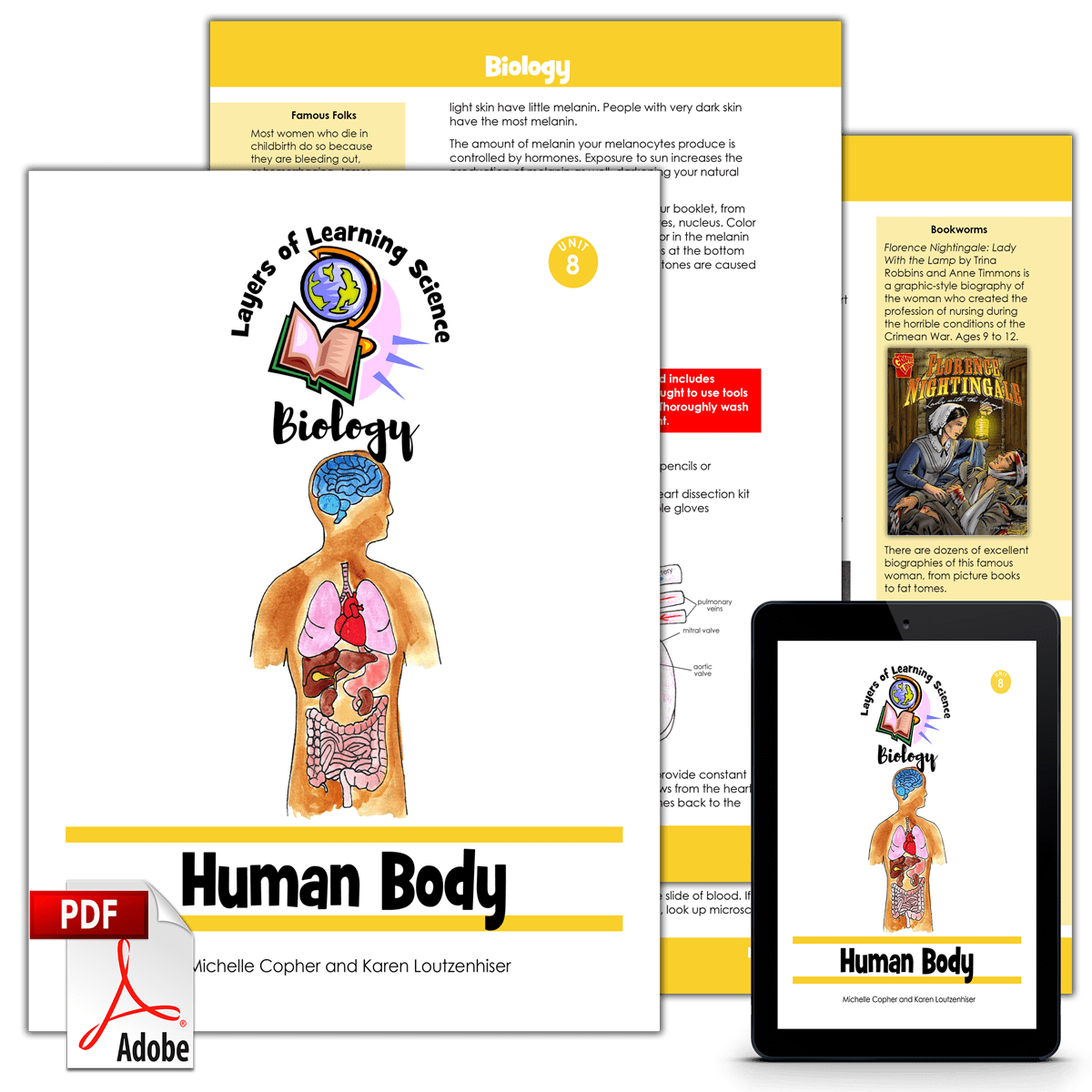
The eyes experiment is a Biology lesson from the Layers of Learning Human Body unit. Layers of Learning has hands-on explorations in every unit of this family-friendly curriculum. Learn more about Layers of Learning.
Eyes are some of the most complex structures of the body. They use light and electrical impulses to allow our brains to see our surroundings.
Human eyesight is our strongest of the senses. Our eyes have a lens that focuses light onto the back of the eye, a curved screen of light-sensing nerve cells. When the image hits the back of the eye it is upside down and our brain turns it back right side up.
We can see color because we have specialized cones (those nerve cells) that allow us to see color. We also have rods, the black and white vision cells.
Step 1: Library Research
Before you begin exploring, read a book or two about eyes. Here are some suggestions, but if you can’t find these, look for books at your library about eyes, vision, or human anatomy. The colored smilies above each book tell you what age level they’re recommended for.
As Amazon affiliates, the recommended books and products below kick back a tiny percentage of your purchase to us. It doesn’t affect your cost and it helps us run our website. We thank you!

Eye: How It Works
by David Macaulay

Step 2: Eye Dissection
WARNING: This experiment uses sharp tools. Also, the specimen has been preserved in chemicals that can be damaging to skin and eyes. Closely supervise children and always wear gloves and goggles when doing dissections. Children younger than 10 should have a parent or older child doing most of the dissection while the younger ones observe.
For this experiment you will need a cow eyeball, dissection kit, gloves, goggles, and a printable of the parts of the eye.

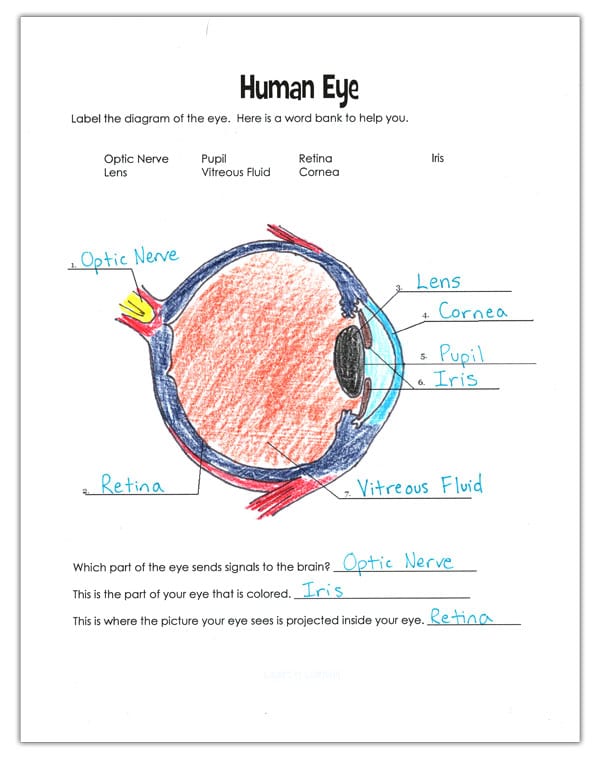
Start by labeling the diagram of the human eye. Use the books you got from the library to find the answers. Color the diagram.
Now use the guide that came with your cow eye dissection kit to dissect the cow eyeball. Remember to wear gloves and googles to protect your skin and eyes from the preservatives the eye has been in.
Cow eyes are similar to human eyes because cows and humans are both mammals. The cow eye is a good substitute for a human eye.
If you’re a more visual person, you will want to follow along with this cow eye dissection video below.
Step 3: Show What You Know
As you are dissecting the eye, make a detailed drawing in your science notebook of the things you see. Label the drawing. Use the drawing to explain or teach another person abut the parts of the eye and how they work.
Additional Layers
Additional Layers are extra activities you can do or tangents you can take off on. You will find them in the sidebars of each Layers of Learning unit. They are optional, so just choose what interests you.
Additional Layer
Go to your library and find some books on optical illusions. They are fun and fascinating.

Additional Layer
Did you know that just as you are right or left handed, you are also right or left eyed? Try this to find out which is your dominant eye.
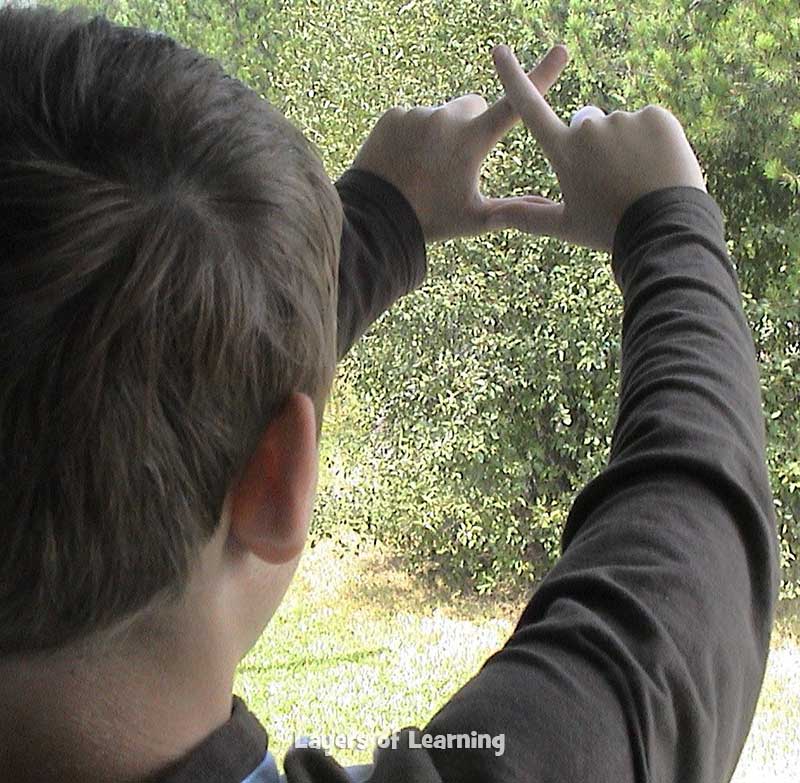
- Form your fingers into a triangle with your thumbs and pointer fingers overlapping each other.
- Stretch your hands out in front of you and pick a target at least ten feet away.
- Sight the target through the triangle of your fingers.
- Now close one eye and then the other without moving your hands or your head. With one eye you will still see the target perfectly. This is your dominant eye. With the other eye, the target will disappear from the triangle of your fingers.
Additional Layer
There are many kinds of eyes in the natural world. Animals range from light sensing to the ability to see in the dark.

Read Animal Eyes from the Museum of Vision to learn more.
Get a Free Unit
Choose between the first unit in each Layers of Learning subject to try for free when you sign up for the newsletter.
We never spam and you can cancel your subscription at any time.


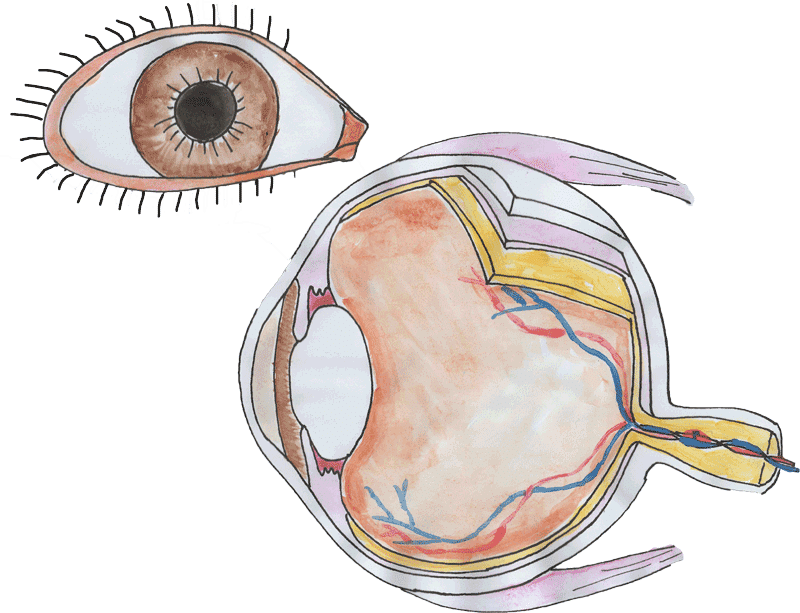

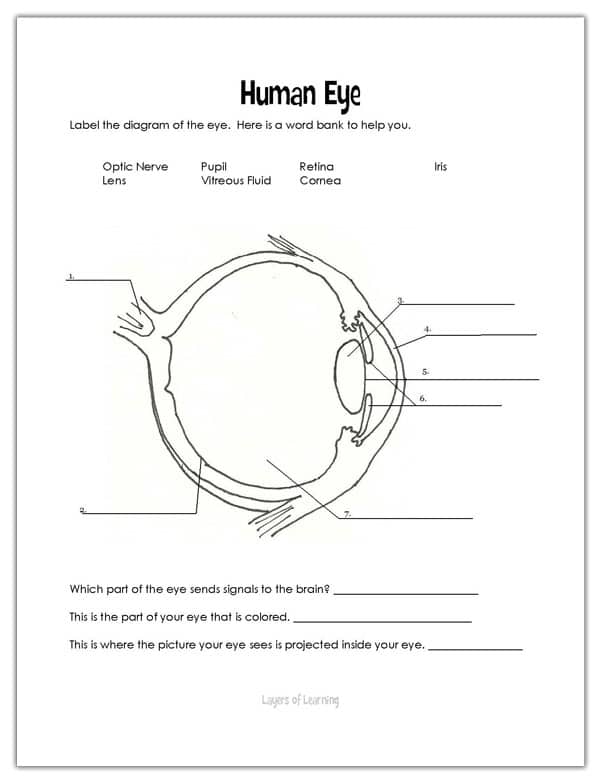
Very cool diagram
It won’t let me print the eye printable
Gabrielle, Thanks for letting us know, the pdf link is fixed and you can download now.